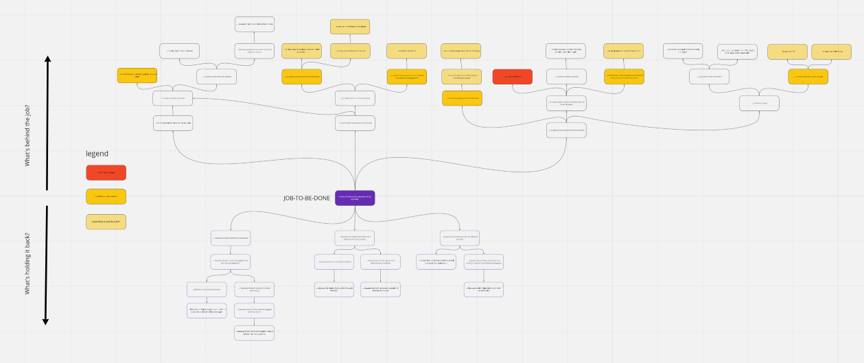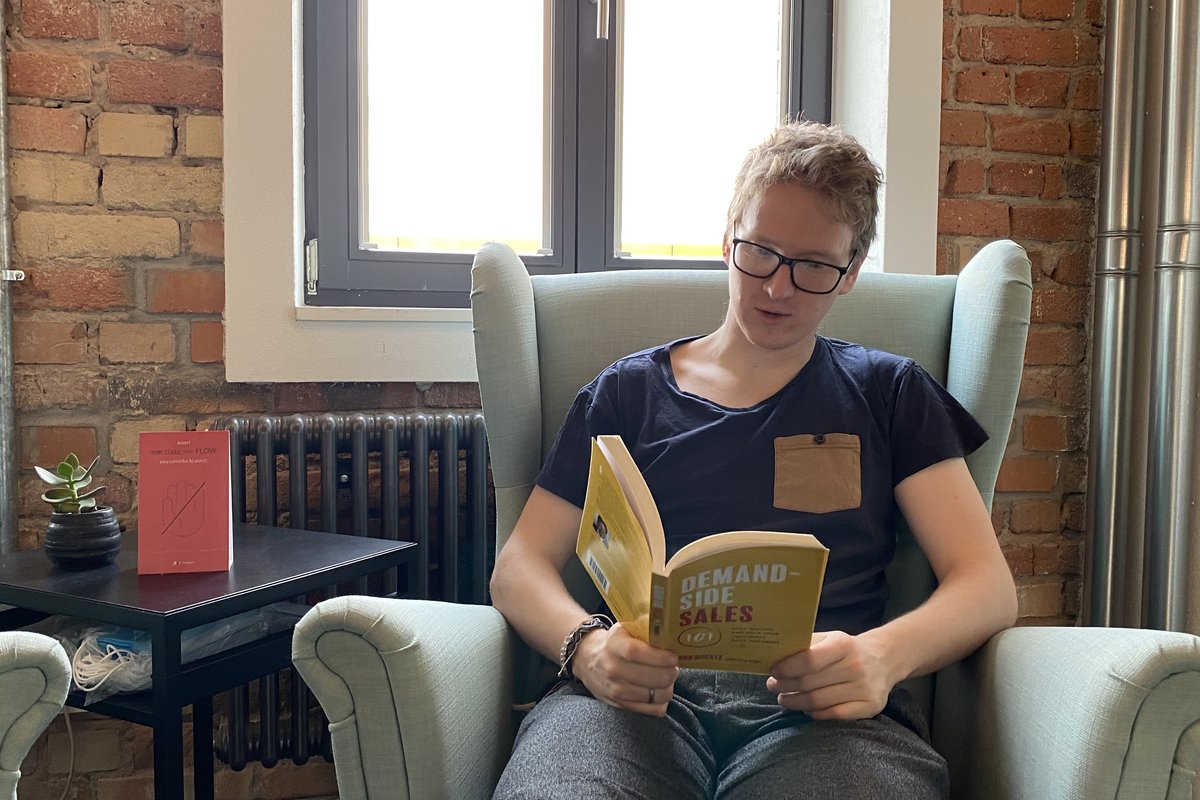Many team members at descript are avid readers. Whether it's a novel, a non-fiction book or a biography - our lunch conversations often revolve around the last book we read. Recently, we established a reading circle in which we regularly introduce new books to each other. So why not share them with you? That's how it should be and that's why we're introducing the new "Reading Circle" section on our blog. Let's start with a non-fiction book.
In our software projects, the analysis phase is the cornerstone for successful development. Understanding what customers and users want to achieve with an application shapes the image of the later solution. We notice this not only when we develop a completely new product at Mataono, but also in the many project inquiries we regularly receive from our customers. Doing user research properly is not always easy. Fortunately, there is great reading on this topic. Our book of the month is Demand-Side Sales by Bob Moesta.
About the book
Classic sales have little to do with requirements analysis. That's why Moesta proposes a new approach, because only those who understand the requirements can sell a product in line with needs. Not for nothing is the subtitle of the book "Stop selling and help your customers make progress". This desired progress must first be worked out - nothing else do we do when we start shaping for a software project.
Building on Clayton Christensen's jobs-to-be-done approach, Moesta gives readers concrete methods to help increase customer understanding (everything from the 5 Whys to concrete interview guides are included). All of this is put together within his framework to create a big picture of desired progress.
We internalized these three aspects of the book as we read it:
First – It is important to recognize push and pull effects
Push and pull effects exist in so many areas of our lives and of course also in the acquisition of new software applications (if you have ever accompanied a digitization project, you know what I mean). There are two different types of push and pull effects to observe when adopting new software. Whenever we want to choose a new (software) solution, there are forces that confirm us to do so. On the one hand, our current problem might be so time-consuming that we long for a simpler software application (push effect). If this is also attractive because it solves many of our problems (pull effect), we find it easier to make a decision. Conversely, there are also factors that block change. Fear of a new solution (push effect) and existing habits (pull effect) mean that users end up doing business as usual.

Push and pull effects in software acquisition projects (p. 68)
Second – Behind every requirement are three sources of motivation
All customer requirements can be analyzed by the 5 Whys down to the core. The desired progress or motivation of each requirement differs: There is the functional motivation that something should simply work. There is the emotional motivation, which aims at the well-being of users. And there is the social motivation, which is aimed at improving the image of the users. It is important to understand the different motivations in order to make the right decisions during the design of the application.

Example for a Web of Abstraction to analyse different motivations
Third – It is about identifying the Point of Struggle
Where will the application be used? What situation are users in when they come into contact with the application? What is the exact timeline behind it? What happens before? What happens afterwards? The more precisely the point of struggle can be determined, the better the application solves the problem in the end.
How we do it at descript
Of course, we too have developed software in the past that did not quite meet the customer's expectations in the end. Although we applied our craft excellently and also involved the customers in the development early on (which does not always work well), we did not always hit the nail right on the head. One reason for this was that we made assumptions about the reality of the users that did not stand up to the actual reality.
Inspired by the book, we were able to refine our process. Equipped with the interview methods, we sought out discussions with the future users and organized them in a much more structured way. We not only recorded the functional requirements, but also the respective motivation behind them. This not only resulted in software that satisfied the users, it also helped us to implement the software more efficiently and faster.
Sometimes it does not need to be a hydro-dynamic spatula with port and starboard attachments and turbo drive, but just a plain old spatula – which also makes our work easier.
Especially with our product Mataono - where we have complete freedom - it is important to understand the target group and to develop the project for the requirements of this group, and not for our imagination. Therefore, before programming, we first talked extensively with users and decision makers. In 23 interviews, we asked the same four questions:
- What is the most exhausting activity in the context of customer consultation? Why?
- When and in what context did the challenges last occur?
- What have you tried so far to solve your challenge?
- What bothers you about the solutions so far?
These questions turned into great conversations, sometimes lasting up to an hour, which gave us a deep insight into the thoughts and lives of the people we interviewed. The first two questions helped us determine the Point of Struggle. In addition, we were able to learn a lot about the motivation of each person. The last two questions showed us if our target group is willing to solve the challenge at all (or are any behaviors or fears getting in the way?). From this short interview guide alone, we were able to generate countless ideas for Mataono.
I recommend this book to everyone who has to deal with customers and their requirements in any way: Sales people, PMs and POs, User Researchers.
What else did we read?
This year I made a resolution to read a book every week. It doesn't always work out, but I've already got through a few titles. If you want to know what I read in February, just check here: Booklist February.
Tom read Code kaputt - Macht und Dekadenz im Silicon Valley by Anna Wiener in January. In the book, the author reports on her experiences as an employee in various start-ups in Silicon Valley. It is about power structures, sexism and the decadence of the supposed elites of young entrepreneurs who massively influence our everyday life with their digital services. But the book is also a portrait of a generation that surrenders to the golden promises of digital start-up capitalism and in the end has to realize that all that glitters is not gold.
Thomas is currently taking a course for the CKA (Certified Kubernetes Administrator) certification. As part of that, he is currently reading Production Kubernetes by Josh Rosso, Rich Lander, Alex Brand, and John Harris. Kubernetes has become the predominant container orchestrator, but many organizations that have recently adopted it are still struggling to run actual production workloads. At descript, we don't use Kubernetes yet, but what isn't can be.
Steffen has been working a lot this month on speeding up our server queries at Mataono. Fittingly, he came across the following article: How we optimized Python API server code 100x.
